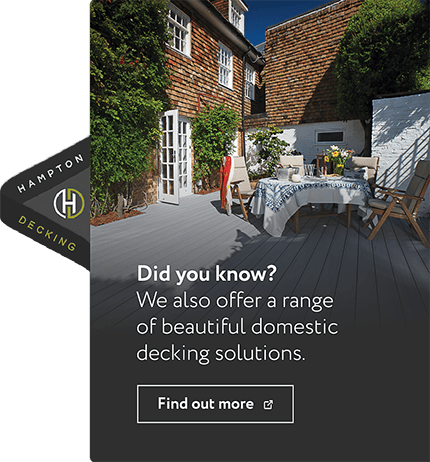Choosing the right decking material is a crucial step in creating your perfect outdoor space. Whether you’re renovating your garden or building a new deck from scratch, it’s important to select a material that fits your lifestyle, budget, and aesthetic preferences. In this guide, we’ll explore how to determine which decking material is best for your needs and look into the various decking materials available.
Understanding Your Needs
Before diving into the decking materials available, it’s essential to consider what you want from your deck. Are you looking for a low-maintenance solution? Is the aesthetic appeal more important to you, or are you working within a tight budget? Understanding your priorities will help guide your choice of decking material.
Types of Decking Materials
When it comes to selecting decking materials, there’s a range to choose from, each with its advantages and disadvantages. Here’s a brief overview of the most common types:
Timber Decking
Traditional timber decking is popular for its natural appearance and warmth. However, it requires regular maintenance like sanding, staining, and sealing to protect it from weather elements and rot.
Composite Decking
Composite decking, a blend of wood fibres and plastic, offers a balance between the beauty of wood and the durability of synthetic materials. It’s known for being low maintenance and resistant to rot, warping, and insects.
uPVC Decking
uPVC or plastic decking is highly resistant to the elements, making it a great option for areas with harsh weather conditions. It doesn’t contain any wood fibres, making it resistant to rot and decay..
Aluminium Decking
Aluminium decking is durable, weather-resistant, and requires very little maintenance. It’s also fire-resistant and stays cool to the touch, making it a safe choice for hot climates.
Considerations for Choosing the Right Decking Material
This section explores what you should keep in mind when it comes to deciding what decking material is best.
Durability and Maintenance
How much time and effort are you willing to invest in maintaining your deck? If you prefer a set-it-and-forget-it approach, materials like uPVC might be the right choice. Timber will require more upkeep.
Aesthetics and Design
What look are you aiming for? The natural look of timber decking is unbeatable, but uPVC decking offers a wide range of colours and finishes that mimic the look of real wood.
Environmental Impact
If sustainability is a priority, consider the environmental impact of your decking material. Timber can be a sustainable choice if sourced responsibly, while composite materials are often made from recycled plastics and wood fibres.
Cost
Budget is a critical factor in your decision. Generally, timber decking can be more cost-effective upfront but may incur more maintenance costs over time. uPVC decking is typically more expensive initially but is more cost-effective in the long run due to lower maintenance costs.
Conclusion
Selecting the right decking material for your needs involves balancing cost, maintenance, aesthetics, and environmental considerations. Take the time to research and consider which material aligns best with your lifestyle and preferences.
If you’re looking for expert advice and quality decking materials, consider reaching out to us at Mayfield Decking. They offer a range of high-quality decking solutions tailored to meet your specific needs and preferences.


